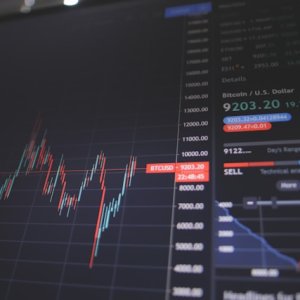World Gold Council: The Best Source to Understand the Gold Market

STORY INLINE POST
Q: What are the main changes you have seen in the gold market since 2009, when you first joined the World Gold Council?
A: The main change has been an increased interest from institutional investors in the asset class, including from pensions, large wealth managers and endowment foundations. The other change relates to central banks. They were generally net sellers of gold in 2009 but have now become net buyers of gold at times. In the 1990s, before the Asian financial crisis, market-based central banks held part of their reserves in US dollars, mainly, making them highly vulnerable. This changed and today, central banks account for about 10 percent of net annual gold demand.
New investment vehicles to access gold have also emerged in the past decade. Demand for gold has increased, especially in periods marked by risk, such as the pandemic. After the financial crisis, investors became much more risk-aware. They have been forced to invest differently and find tools to better manage risk.
Q: What features make WGC Research the best source for understanding the drivers of gold’s demand, supply and performance?
A: Our research team spans the globe and is fully dedicated to the gold market. While the team is small compared to the research teams at major banks, there is no bank that has a gold research team as large as ours. Our specialization in gold allows us to think in-depth about complicated issues. Because we do not sell anything and only seek to be a trusted source of information, we are able to be a leading, impartial voice on topics such as gold valuation.
Through years of analysis, WGC has become an expert source, especially as it developed an evaluation framework and identified four gold drivers: economic expansion, risk and uncertainty, opportunity cost and momentum. All these factors can explain any gold environment, which is extremely useful not only for us but for all investors who seek to better understand the market. We also have the Gold Return Attribution Model (GRAM) that allows us to understand how much of the gold return is attributed to certain factors in any given month. All these advances have led others to request the use of our models and data. Our differentiator is that we help everyone who is interested in gold. There is no other source that rivals WGC’s depth of knowledge.
Q: How is gold doing in 2022 so far and what are your forecasts for this year?
A: In 2021, gold prices declined, which is understandable considering that in 2020 gold prices rose by more than 25 percent due to market stress. However, as risk perceptions due to the pandemic began to calm down and, at the same time, interest rates and pressure on gold prices began to increase, we saw prices dropping. However, they only did so by a few percentage points. In contrast, in 2022, gold has been a positive performer and one of the best performing asset classes. Gold has outperformed major markets, including the stock and bond markets, except for the commodities market. In addition, gold provided protection and loss reduction as the war against Ukraine started to unfold.
When it comes to how gold will perform in 2022, WGC does not forecast prices. Rather, we provide investors with the framework and tools to make their own assumptions. However, we believe gold investment and management will gain strength this year due to inflation and geopolitical pressures. We may also see some slowdown in consumer demand as a byproduct of underperforming key markets, such as China, due to its COVID-19-induced lockdown. Historically speaking, gold investments outweigh the drag brought on by consumer demand. Lastly, we expect central banks to continue to be buyers of gold this year, just like they have been for the past 12 years.
Q: What other factors do you think will continue to drive price and demand in 2022?
A: The issue with financial markets is that they cannot be predicted with full certainity. In 2020, when we published our outlook for the year, the pandemic was certainly not expected. As such, our thinking is based more on sound long-term strategies that allow investors to earn returns while reducing risk. Gold is the perfect asset for this; above all, it tends to recover in times of stress.
In addition to inflation and the invasion of Ukraine, it is important to understand that gold will also react to interest rates. In fact, part of the drag that gold has experienced in recent weeks is due to interest rates and a stronger dollar. We also expect possible ramifications from geopolitics, outside of the war in Ukraine. This may offset potential 2022 returns.
However, gold generally starts to do better once interest rates rise because that is when the market understands what the US Federal Reserve and other central banks are planning, which is still mostly uncertain. In 2022, we expect inflation to be very stubborn and, combined with geopolitical risks and a potential shock to the economy, gold is likely to offset some of the momentum from interest rates and a stronger dollar.
Q: What would you say are the main concerns for gold in 2022?
A: Currently, most investors are trying to figure out the impact that interest rates and the dollar will have on gold, especially since these two factors are used in the most common models to forecast the performance of the metal. We recommend that investors pay attention to interest rates but not just nominal interest. Real interest rates, which are nominal rates minus inflation, are more telling.
Among other concerns investors have had for years are environmental, social and governance (ESG) considerations. Gold fits into the ESG framework quite well, not only in terms of responsible gold mining principles but also because gold basically lasts forever. Its emissions are reduced over time because unlike other metals, it can be reused: between 25 and 35 percent of the annual gold supply comes from recycling. Consequently, gold can contribute positively to investors' environmental objectives.
Q: How has gold’s balance of supply and demand evolved in 2022?
A: This balance has been relatively stable for ages. Gold production has increased but not at the same rate as its yield. However, its success lies in the fact that the gold supply is not concentrated in a single region and that it has two sources: production and recycling. Consequently, if demand increases, recycling will satisfy that necessity.
Q: How could Mexico benefit from the current gold market trend?
A: Gold research shows that metal production has great social and economic benefits for countries. WGC members produce a local economic benefit of around US$1,100 per pound extracted. Additionally, 95 percent of our members promote local job creation.
Considering the current environment, I recommend that Mexican investors consider gold as they may not only gain from its performance but also from a potential weakening of the Mexican peso. Depending on how the peso performs against the dollar, periods of risk can generally benefit long-term gold investors. Today, gold is an excellent option to consider for an investor's portfolio as it not only provides potential returns but also diversification and liquidity.
The World Gold Council (WGC) is the global gold industry’s market development organization. It works across all sectors of the industry, from investment to gold mining. Its aim is to stimulate and sustain demand for gold.








 By Paloma Duran | Journalist and Industry Analyst -
Wed, 06/01/2022 - 11:55
By Paloma Duran | Journalist and Industry Analyst -
Wed, 06/01/2022 - 11:55














